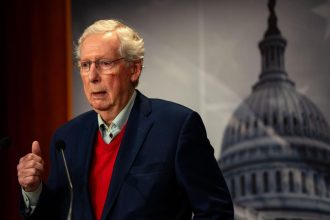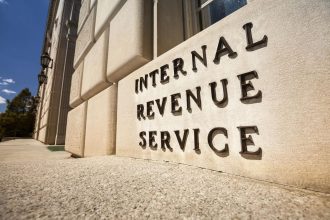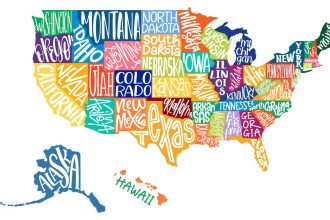The Federal Trade Commission (FTC) has issued a final rule banning noncompete arrangements for employees, independent contractors, and executives. The ban becomes effective 120 days after the date of its publication in the Federal Register (May 7). It is therefore scheduled to take force in early September.
However, before you get excited about the end of your noncompete, be aware that the matter is far from settled. Legal challenges have already been lodged against the federal ban. Many experts predict it will not survive.
The final rule and the detailed release with it run to a whopping 570 pages. Assuming you have no desire to read all of that, I concisely explain here what you need to know.
1. How The FTC Defines Noncompetes
The final rule defines a noncompete as a “term or condition of employment that prohibits a worker from, penalizes a worker for, or functions to prevent a worker” from either taking a different job or operating a business after the end of employment.
An analysis of the final rule from the law firm Morgan Lewis asserts that the scope of the noncompete ban “will include standalone noncompete agreements, but will also pick up many executive agreements, including noncompete covenants in equity grants, employment agreements, and severance agreements.”
Since the rule voids post-employment noncompete covenants, the ban may extend beyond basic noncompete clauses. For example, with stock options and restricted stock units (RSUs), it may prohibit any provision that stops vesting if you leave to work for a competitor. In an analysis of the final rule, the law firm Seyfarth Shaw explains that “this will depend on the terms of the equity compensation plan and agreements and the scope of the applicable restrictive covenants.”
2. Exceptions To The Noncompete Ban
While the ban is fairly sweeping, it does contain some exceptions.
Not All Noncompetes Go Away For Executives
While no new noncompetes are allowed, existing noncompetes for senior executives can remain. The FTC’s final rule defines “senior executive” as a worker who earns more than $151,164 per year and is in a “policy-making position.”
Notably, this is different than the broader definition of a senior executive used by the Securities & Exchange Commission for securities disclosure regulation and reporting by executives. The requirement of “policy-making” considerably narrows the FTC’s definition of a senior executive. According to a commentary from the law firm Trucker Huss, “this narrow definition excludes many highly paid employees such as sales and investment professionals or executives without policy-making authority.”
Certain Industries Are Excluded
The noncompete ban does not apply to nonprofit organizations. It also carves out industries not covered by the Federal Trade Commission Act: banks, savings-and-loan institutions, federal credit unions, common transportation carriers, air carriers, and any individual or business subject to the Packers and Stockyards Act.
M&A Noncompetes Are Still Allowed
The rule does not apply to noncompetes that are part of a corporate acquisition or sale of business interests. The final rule defines such transactions as “a bona fide sale of a business entity, of the person’s ownership interest in a business entity, or of all or substantially all of a business entity’s operating assets.”
3. Your State Laws May Still Apply
The federal noncompete ban overrides any state rules on noncompetes that are weaker or at odds with it. This is explained by an analysis of the noncompete ban from Wagner Law Group: “The final rule supersedes state laws to the extent, but only to the extent, that such state laws conflict with the final rule or would otherwise permit or authorize conduct prohibited under the final rule.”
State bans against noncompetes that are even tougher than the federal ban, such as the strict anti-noncompete rules of California, remain in force.
4. Nondisclosure Agreements May Be Restricted Too
Law firms believe the noncompete ban may apply to similar worker arrangements, such as nondisclosure agreements (NDAs), if they, in the final rule’s words, “function to prevent” a worker from taking a new job or starting a new business. According to a memo on the final rule from the law firm Jackson Lewis, “nondisclosure agreements, training repayment agreement provisions, and nonsolicitation agreements that are overbroad…could be barred by the final rule.”
In their commentary, attorneys at the law firm Seyfarth Shaw agree. They observe that, under the noncompete ban, NDAs could be deemed to operate as noncompetes if they “span such a large scope of information that they function to prevent workers from seeking or accepting other work or starting a business after they leave their job.”
5. Lawsuits Enforcing Prior Noncompetes Do Not Go Away
Is your former company going to court to enforce a noncompete against you? The federal noncompete ban does not stop the lawsuit. The FTC’s final rule states that if the alleged breach of the noncompete happened prior to the effective date of the new rule, the litigation can start or continue.
6. What Your Company Must Tell You
If you have a noncompete, whether with a current or former employer, the company must inform you that the noncompete is no longer enforceable. The final rule says the company must give you a “clear and conspicuous notice” that the noncompete clause will not be and cannot be legally enforced.
7. Legal Challenges Will Severely Test The Noncompete Ban
Legal challenges to the noncompete ban are already under way from a variety of plaintiffs. One high-profile litigant is no less than the United States Chamber of Commerce. It filed a lawsuit seeking injunctive relief that would stop the ban from coming into force, or at the very least would postpone its effective date.
A more aggressive challenge is coming from Ryan LLC, a provider of tax services and software. It filed a lawsuit seeking to vacate and set aside the noncompete ban. The lawsuit claims that the FTC lacks the authority to issue the rule and that the rule itself is unconstitutional.
In its commentary, the law firm Seyfarth Shaw predicts that some of the lawsuits against the noncompete ban will prevail. “We expect at least some of the challenges to be successful,” write the attorneys, “because any final rule in which the FTC claims authority to ban restrictive covenants is not likely to withstand constitutional scrutiny” under various legal doctrines. They note, however, that even after successful challenges, the appeals process may take 12 to 18 months to play out before any Supreme Court decision.
Read the full article here














